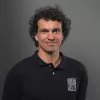Discipline
Paragliding XC
What went wrong ?
Discipline: Paragliding Accuracy and Cross-Country (XC)
The effort of the Indonesian NAC, together with the Airsport Federation of Asia (AFA) and FAI, resulted in paragliding’s official debut as a full medal sport at the 2018 Asian Games in Jakarta–Palembang, Indonesia.
A total of six gold medals were awarded across two disciplines: Men’s Individual Accuracy, Women’s Individual Accuracy, Men’s Team Accuracy, Women’s Team Accuracy, Men’s Team Cross-Country (XC) and Women’s Team Cross-Country (XC)
Although the Asian continent has 45 member nations under the Olympic Council of Asia (OCA), only 18 nations sent delegations for paragliding. My country (Philippines) did not send a delegation for various reasons, aside from budget, the top reason was not enough pilots with the right skills. Subsequent Asian Games hosts opted not to include paragliding—primarily due to a mix of scheduling and logistical decisions in coordination with OCA, but also because of lingering issues revealed in 2018:
Accidents and Safety Concerns
Challenging Weather and Site Conditions
Limited Continental Representation
Rotation of Regional / Non-Olympic Sports and Host Popularity Preference
While paragliding’s inclusion marked a milestone, the event’s reputation was tarnished and viewed by many as unsuccessful due to significant safety incidents, inadequate venue selection, and uneven competitive quality.
Safety and Incident Overview of the 2018 Asian Games - Paragliding
Despite the historical significance of the debut, multiple accidents undermined confidence in the sport’s readiness for large-scale, multi-sport inclusion.
Afghanistan: A female athlete stalled mid-air after a sudden drop in wind and fell from ~15 m, suffering a spinal injury (reported as spinal cord damage / broken neck and back).
China: A male athlete’s canopy collapsed ~20 m from the finish area, resulting in a broken leg.
Mongolia: A pilot was blown off course and landed in a parking area near the venue (no serious injuries reported).
These incidents were widely publicised, emphasising the dangers of inadequate site and weather management. The crashes, visible to spectators and media, created negative publicity that overshadowed the sport’s debut.
Breakdown of Issues in Cross-Country (XC)
1. Inadequate XC Venue: The Puncak site was not an established XC flying area; its historical site record was only around 10 km. XC tasks ranged only 15–30 km, with an average goal completion rate of 25%, reflecting difficult or unsuitable conditions. The short task distances compromised the event’s competitive credibility and limited its international recognition as a true XC showcase.
2. Artificial Venue Modification: Organisers were forced to construct a new 500 m take-off ramp to supplement the original 300 m Accuracy site. This intervention was resource-intensive and symbolised the venue’s inherent unsuitability for high-level XC competition. Although the new ramp functioned, it highlighted the need for site feasibility assessments in future events.
3. Wide Skill Gap Among Competitors: A senior official reported a “huge range” of skill levels among participants—from world-class athletes to pilots who had never flown XC. The disparity compromised safety, fairness, and standardisation, as less-experienced pilots struggled with the technical demands of XC flying. This imbalance diluted the sport’s image as a credible elite discipline.
Breakdown of Issues in Paragliding Accuracy
1. Wind Inconsistency and Weather Volatility: The Puncak site experienced highly dynamic wind shifts, ranging from gusts to calm air.
One athlete’s accident (stall/fall) was directly caused by a sudden loss of wind, exposing the limits of site predictability.These conditions made controlled and safe landings difficult even for seasoned pilots.
2. Low Elevation and Limited Correction Space: The Accuracy take-off (approx. 300 m above landing) offered limited altitude for manoeuvre correction, especially under variable wind. This reduced margin of safety increased the likelihood of hard landings and stalls during competition approaches.
3. Public Visibility of Crashes: The Accuracy landing zone was positioned directly in front of spectators and cameras. Accidents were immediately visible, amplifying negative media coverage and public perception that paragliding is unsafe.
This created a public relations setback for FAI, AFA, and the Asian Games organisers.
What would you propose ?
1. Site Selection Reform: Future multi-sport paragliding events must prioritise safety, proven site performance, and meteorological stability over logistical convenience or proximity to main venues.
2. Separate Discipline Venues: Accuracy and XC should not share one site if the terrain and weather conditions clearly favor one discipline. Dedicated sites ensure both fairness and safety.
3. Qualification and Experience Standards: Enforce stricter pilot qualification requirements for major continental games to minimise wide skill gaps and associated safety risks.
4. Pilot Safety and Incident Transparency: Establish a formal incident reporting and investigation framework under FAI/AFA oversight to improve transparency and future preparedness.
5. Reputation Rehabilitation and Development Program: Introduce a long-term Asian Paragliding Development Program focused on safety culture, pilot training, and standardised venue evaluation to restore confidence in the sport’s inclusion in future games.










Comments
Instead of weakening the organizing team to save costs, we should assign more tasks and responsibilities to the CIVIL stewards. Organizing a CAT1 Event ist komplex and demanding. In the event that an exceptional Situation arise which overhelm the orga, it is beneficial to have experienced stewards available who can step in and fill gaps. But yes - If 4 stewards are simply taking a vacation at the expense of the sport, it's better to reduce their number..